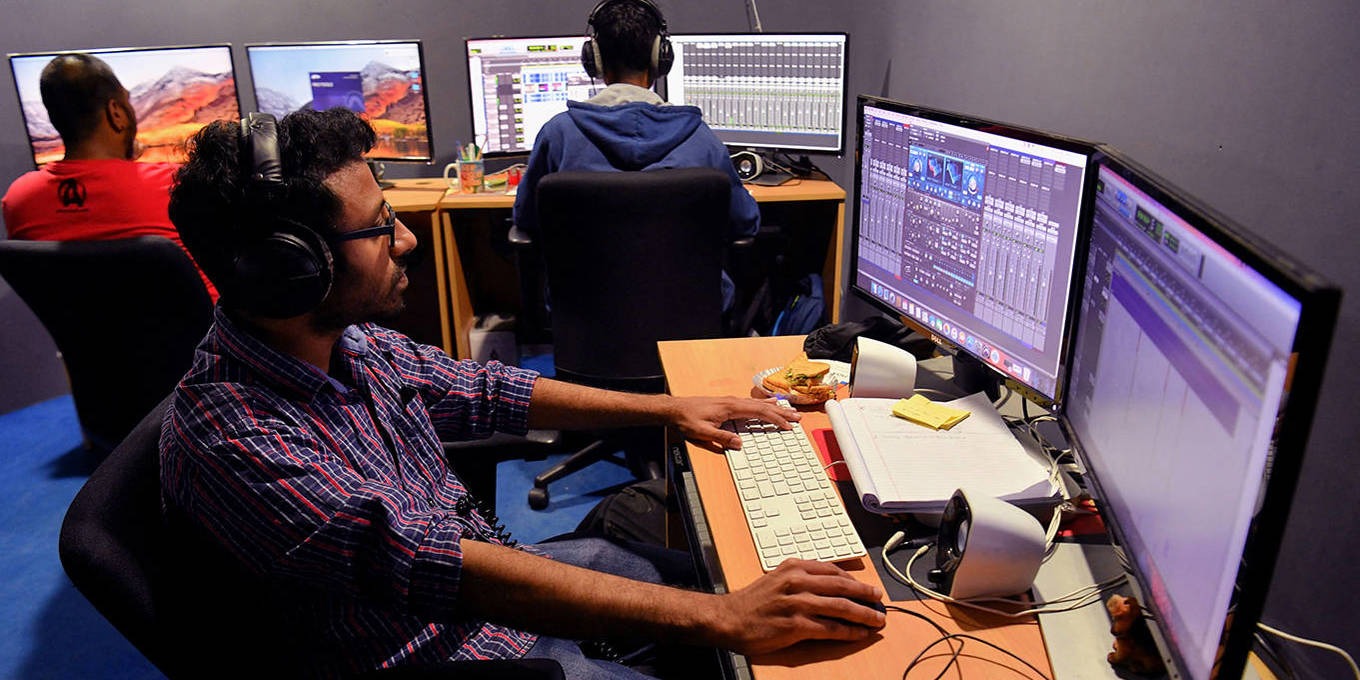Mark Follman at Mother Jones:
 A decade has passed, but exhuming Elliot Rodger’s life and ghastly final actions remains fraught. It risks inflicting further pain for the victims’ families and other survivors, and new revelations could feed the kind of infamy many perpetrators seek. The case stands out among the hundreds I’ve studied in 12 years of reporting on mass shootings. To this day it fuels copycat attackers who fixate on misogyny, making it an ongoing subject of news coverage and various academic and security research. It also helped catalyze policy change, in particular the spread of “red flag” laws aimed at keeping guns away from unstable people.
A decade has passed, but exhuming Elliot Rodger’s life and ghastly final actions remains fraught. It risks inflicting further pain for the victims’ families and other survivors, and new revelations could feed the kind of infamy many perpetrators seek. The case stands out among the hundreds I’ve studied in 12 years of reporting on mass shootings. To this day it fuels copycat attackers who fixate on misogyny, making it an ongoing subject of news coverage and various academic and security research. It also helped catalyze policy change, in particular the spread of “red flag” laws aimed at keeping guns away from unstable people.
Yet from the start, this tragedy has been wrongly mythologized in the media and academia and poorly understood by the public, its lessons for prevention buried.
More here.

 There is a buzz in India today – a sense of limitless possibilities. India has just
There is a buzz in India today – a sense of limitless possibilities. India has just  Now we may return briefly to the philosophy of Wittgenstein. If this seems a radical change of subject, an abrupt passage from the familiarity of comedy to the strangeness of technical philosophy, then it may be hoped that such an experience of difference may itself become important. Instead of connecting Keaton to Wittgenstein in some difficult conceptual fashion, I would be happy {great exact use of the word!} simply to convey the impression that in the same way as Keaton may be profound, Wittgenstein may be enjoyable. The relation between them could turn out to be something more interesting than the necessity to choose between comedy and philosophy.
Now we may return briefly to the philosophy of Wittgenstein. If this seems a radical change of subject, an abrupt passage from the familiarity of comedy to the strangeness of technical philosophy, then it may be hoped that such an experience of difference may itself become important. Instead of connecting Keaton to Wittgenstein in some difficult conceptual fashion, I would be happy {great exact use of the word!} simply to convey the impression that in the same way as Keaton may be profound, Wittgenstein may be enjoyable. The relation between them could turn out to be something more interesting than the necessity to choose between comedy and philosophy. A
A S
S Higher ed is at an impasse. So much about it sucks, and nothing about it is likely to change. Colleges and universities do not seem inclined to reform themselves, and if they were, they wouldn’t know how, and if they did, they couldn’t. Between bureaucratic inertia, faculty resistance, and the conflicting agendas of a heterogenous array of stakeholders, concerted change
Higher ed is at an impasse. So much about it sucks, and nothing about it is likely to change. Colleges and universities do not seem inclined to reform themselves, and if they were, they wouldn’t know how, and if they did, they couldn’t. Between bureaucratic inertia, faculty resistance, and the conflicting agendas of a heterogenous array of stakeholders, concerted change  Genetic information usually travels down a one-way street:
Genetic information usually travels down a one-way street:  Every generation of adults thinks the next is growing up in a broken world. “It is the story of humanity,” says Jonathan Haidt, author of a new book on a youth mental illness epidemic called
Every generation of adults thinks the next is growing up in a broken world. “It is the story of humanity,” says Jonathan Haidt, author of a new book on a youth mental illness epidemic called  Strangeness – estrangement – is very characteristic of this world – and a world it is, since all these prose works convey a very similar atmosphere and are largely set in the same locale – the Norwegian west coast, with its fjords, its islands, its fishing villages, the omnipresent sometimes threatening, sometimes comforting sea. (It’s rather piquant for an Irish reader to see the word ‘skerries’ coming up often in the English translation – it means of course reefs or rocky islands from Old Norse sker and is a reminder of our own Norse inheritance.)
Strangeness – estrangement – is very characteristic of this world – and a world it is, since all these prose works convey a very similar atmosphere and are largely set in the same locale – the Norwegian west coast, with its fjords, its islands, its fishing villages, the omnipresent sometimes threatening, sometimes comforting sea. (It’s rather piquant for an Irish reader to see the word ‘skerries’ coming up often in the English translation – it means of course reefs or rocky islands from Old Norse sker and is a reminder of our own Norse inheritance.) Coppery like a penny, thick like bad molasses, even a little gamey like a possum.
Coppery like a penny, thick like bad molasses, even a little gamey like a possum. We all need sleep, but no one really knows why. For the past 10 years, a prevailing theory has been that a key function of sleep is to
We all need sleep, but no one really knows why. For the past 10 years, a prevailing theory has been that a key function of sleep is to  Cocktails with George and Martha is a dishy, process-heavy appreciation of a cinematic masterpiece. Gefter shows how, after almost 60 years, the kitchen-sink savagery of the movie—and Edward Albee’s 1962 play, on which it is based—still shatters. The film portrays a long, cocktail-infused Saturday night at the home of middle-aged history professor George (played by Richard Burton in the movie) and his wife, Martha (Elizabeth Taylor). Martha has invited another couple over for drinks, with whom they begin to bicker, then flirt, then wage war. Their heaviest weapon is their imaginary child (they are, in fact, childless), whom they use as a punching bag and a life raft. Gefter locates Albee’s genius in the creation of the child and his poetic language, but also in the tender ending, which suggests that for George and Martha, at least, the sparring has been play-acting, albeit of the most serious kind.
Cocktails with George and Martha is a dishy, process-heavy appreciation of a cinematic masterpiece. Gefter shows how, after almost 60 years, the kitchen-sink savagery of the movie—and Edward Albee’s 1962 play, on which it is based—still shatters. The film portrays a long, cocktail-infused Saturday night at the home of middle-aged history professor George (played by Richard Burton in the movie) and his wife, Martha (Elizabeth Taylor). Martha has invited another couple over for drinks, with whom they begin to bicker, then flirt, then wage war. Their heaviest weapon is their imaginary child (they are, in fact, childless), whom they use as a punching bag and a life raft. Gefter locates Albee’s genius in the creation of the child and his poetic language, but also in the tender ending, which suggests that for George and Martha, at least, the sparring has been play-acting, albeit of the most serious kind. Imagine a machine that provides a simulation of any experience a person might want, but once the machine is activated, the person is unable to tell that the experience isn’t real. When Robert Nozick formulated this thought experiment in 1974, it was meant to be obvious that people in otherwise ordinary circumstances would be making a horrible mistake if they hooked themselves up to such a machine permanently. During the intervening decades, however, cultural commitment to that core value — the value of being in contact with reality as it is — has become more tenuous, and the empathic use of AI, in which people seek to be understood, cared for and even loved by a large language model (LLM), is on the rise.
Imagine a machine that provides a simulation of any experience a person might want, but once the machine is activated, the person is unable to tell that the experience isn’t real. When Robert Nozick formulated this thought experiment in 1974, it was meant to be obvious that people in otherwise ordinary circumstances would be making a horrible mistake if they hooked themselves up to such a machine permanently. During the intervening decades, however, cultural commitment to that core value — the value of being in contact with reality as it is — has become more tenuous, and the empathic use of AI, in which people seek to be understood, cared for and even loved by a large language model (LLM), is on the rise.